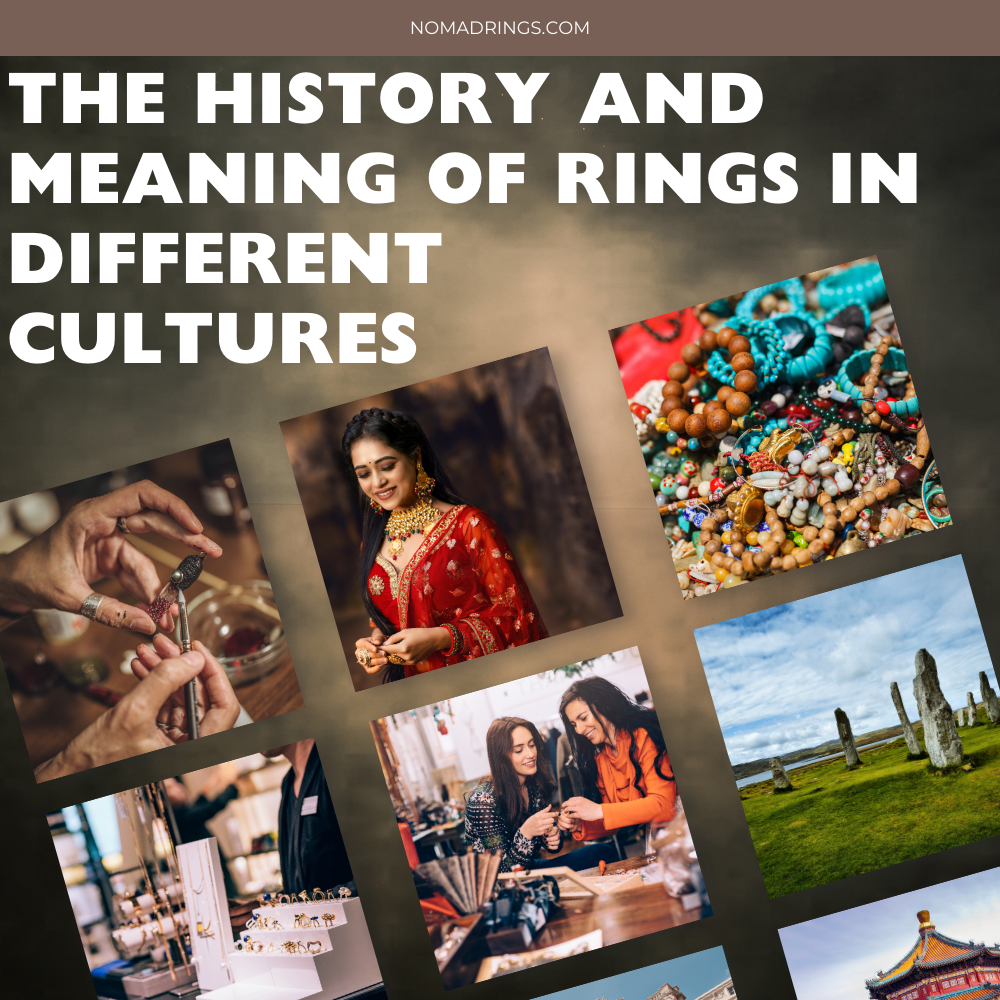
The History and Meaning of Rings in Different Cultures
Rings are more than just accessories. Across the world and throughout history, they’ve been symbols of love, power, status, protection, and tradition. Whether it’s a wedding band or a signet ring passed down through generations, these small circles carry big stories. Let's take a journey around the globe to explore how different cultures have used rings—and what they’ve meant.
Ancient Egypt: Circles of Eternity
The Egyptians were among the first to exchange rings as symbols of love and commitment. They believed the circular shape represented eternity—without beginning or end. Rings were often made of braided hemp or leather, later evolving into metal bands. The Egyptians also believed the “vena amoris” (vein of love) ran directly from the fourth finger of the left hand to the heart, which is why we still wear wedding rings there today.
Ancient Rome: Status and Ownership
In ancient Rome, rings were a sign of social status. Only certain classes could wear gold rings, while iron rings were for the lower ranks. Engagement rings were introduced here too—but instead of romance, they symbolized a business contract and ownership. A man would give a woman a ring to mark her as his future wife and show that she was off the market.
India: Spiritual and Ceremonial Significance
In Indian culture, rings have deep spiritual and astrological significance. It’s common to wear specific gemstones on certain fingers to attract prosperity, health, or love. Toe rings, called bichiya, are traditionally worn by married Hindu women as a symbol of marital status. During Indian weddings, exchanging rings has become a modern tradition, blending with ancient customs and adding a personal touch to engagements.
China: Tradition and Transformation
In ancient China, thumb rings were worn by archers for protection during battle. Over time, they became status symbols, especially when crafted from jade or ivory. In traditional Chinese culture, rings also played a role in family inheritance and respect. Today, wedding bands and diamond engagement rings are increasingly popular, influenced by Western culture—but many still incorporate gold, which symbolizes wealth and happiness.
Africa: Identity and Heritage
Throughout African cultures, rings have been used to express tribal identity, social rank, and even rites of passage. Rings made from brass, beads, or carved wood carry powerful symbolism. In some communities, rings are worn in stacks on fingers or arms, representing beauty, heritage, and even one’s journey through life.
Celtic and European Influence: Love and Loyalty
In Ireland, the Claddagh ring—featuring two hands, a heart, and a crown—represents friendship, love, and loyalty. In Medieval Europe, rings were used in religious ceremonies, often carrying inscriptions or religious icons. Signet rings with family crests were also a way to mark documents and show lineage.
Why It Matters Today
No matter where you're from or where you’re headed, rings continue to tell stories. They’re portable pieces of history, art, and emotion. At Nomad Rings, we believe every ring you wear is more than an accessory—it’s a connection to something greater: a moment, a place, a person, or a journey.
So next time you slide a ring onto your finger, think about the centuries of meaning behind it. You’re not just wearing a piece of jewelry—you’re wearing a legacy.








